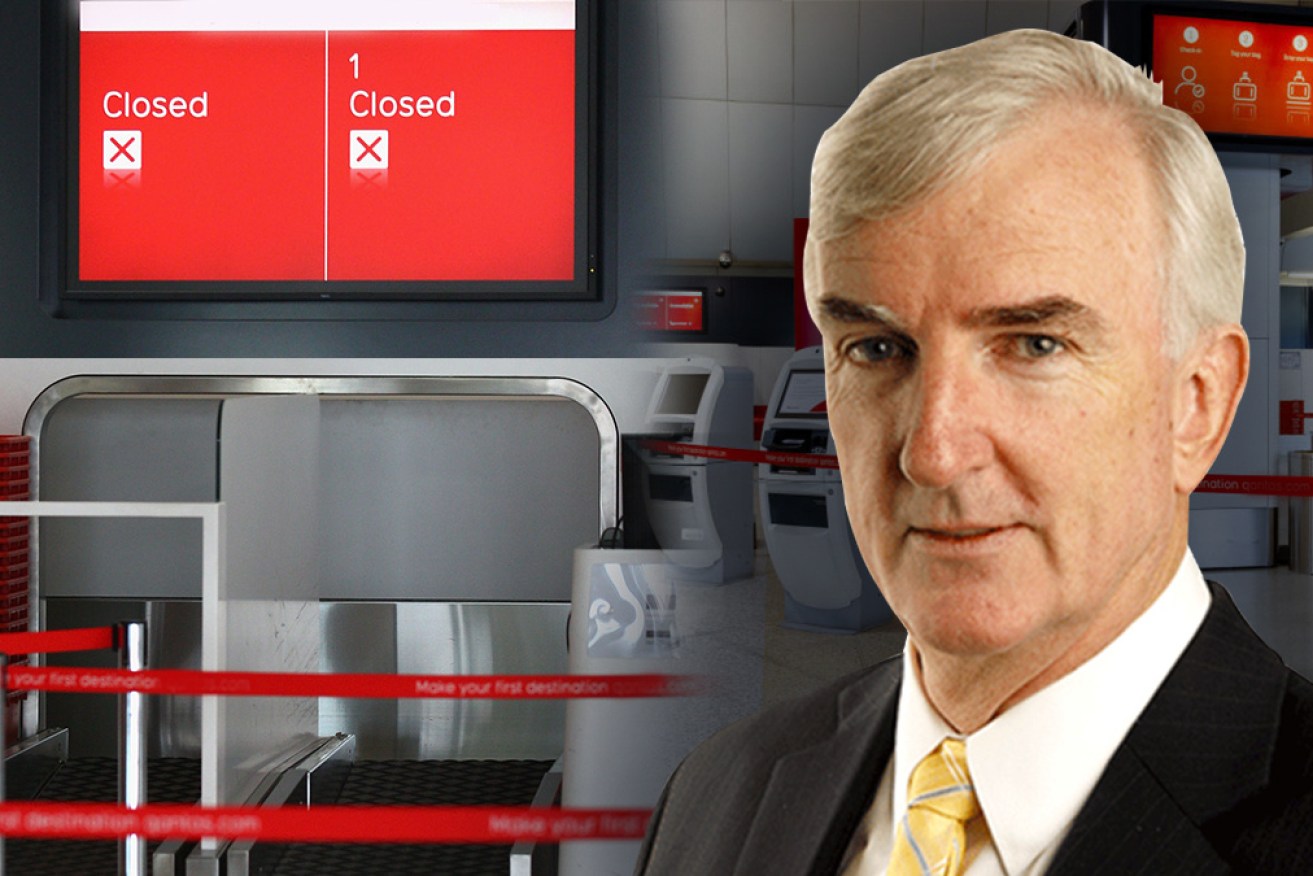What falling immigration means for our economic recovery


There's little chance of an economic recovery while our borders are shut. Photo: TND
No wonder the government says it is looking for new post-COVID economic drivers – it quietly left its biggest one smashed in a ditch on Friday.
Fridays are the traditional day for “taking out the garbage”, when governments drop bad news, hoping the impact will be softened by the weekend.
And so it was last week when the government partially admitted the population growth the country has been relying on had been whacked.
The immediate news was that net overseas migration is expected to fall by 30 per cent this financial year before plunging off the cliff in 2020-21, down 85 per cent.
In rough numbers, that means instead of net overseas migration of 270,000 next financial year, we will gain only about 40,000.
NOM has been accounting for about 60 per cent of our population growth.
But wait, there’s more – or rather, there’s fewer. Our natural population growth also is falling.
The government’s natural population increase growth assumptions were already a joke for anyone who took a passing interest in demographics.
In the ancient history of 2019, Treasury was betting on overall population growth rising to 1.7 per cent in the current financial year.
(It’s disheartening that the Reserve Bank was going along with that as recently as its February Statement on Monetary Policy. The RBA’s credibility will be tested by whether it wakes up in this Friday’s SoMP.)
That 1.7 per cent growth assumption carried massive implications for everything from tax collections to housing demand, urban planning to car sales. It has implications for the nation’s average age and how many workers we have to support those too young or old to work.
Most importantly, population growth was about the only driver of consumption growth – and consumption makes up about 60 per cent of the economy. Or it used to.
With real take-home wages effectively stagnant for half a dozen years, it has only been population growth – both NOM and natural – that has kept consumption modestly positive.
Now population growth is coming to a screeching halt along with most of the rest of the economy and the government has no policies to pick up the slack when the present extra social security safety nets expire.
The 1.7 per cent population growth forecast came from assuming solid NOM continuing (despite a cutback in permanent migration numbers) and domestic fertility increasing.
Treasury assumed our fertility rate would jump from 1.7 births per woman in 2017 to 1.9 in 2021 and stay there ever more.
The reality is that our fertility rate has been steadily falling from a recent peak of 2 back in 2008 when there was a resources boom and baby a bonus to encourage breeding.

Source: ABS
Increased female participation in the workforce and the overall trend of the developed world say the fertility rate will continue to fall and natural population growth eventually struggle to stay positive.
Population growth in the year to the end of September was already down to 1.5 per cent.
Being Australia, about the first thing people think of is: What will it mean to housing prices?
Well, it’s definitely not positive.
The unswerving fundamental of strong population growth has effectively underwritten the Australian housing industry.
Housing construction is one of our biggest employers.
And it’s an industry with a healthy multiplier effect – the industry is relatively well paid, tradies spread their cash around, people moving into a new home tend to buy a lot of other stuff, and there’s all the secondary jobs ranging from real estate agents and conveyancers to urban planners and road builders.
So all other things being equal, a sharp reduction in the housing industry’s fundamental driver would be of concern for the economy.

The lull in housing construction is bad news for the economy.
But all other things were not equal even before the ‘rona hit.
The Reserve Bank was already betting Australia’s economic revival on higher housing prices driving a turnaround in housing construction in the second half of this year.
With double-digit unemployment, people forced to eat into their savings, low interest rates having lost their power to entice ever greater debt amid the general wariness that comes with uncertain times and now low population growth, the RBA has lost its driver reviver.
Which is why Australia’s next crisis is government inaction on creating immediate employment – not regressing to the neoliberal dogma that “the market” will sort it out given enough corporate tax cuts, industrial relations reform and red tape slashing.
One of the most obvious employment creation schemes that also carries lasting social benefit is a quick investment in social and public housing – something that scores highly on Australia Institute scorecard for the most efficient post-pandemic fiscal policy.
It is quite possible the government’s Friday NOM forecast could yet prove optimistic, that NOM will fall further. And serious recessions tend to lower the birth rate.
Before Friday’s announcement, former Immigration Department deputy secretary Abul Rizvi had made his own estimates of COVID-19’s population impact. In some ways, he was more pessimistic than Treasury.
There were 2.43 million temporary entrants in Australia in December 2019. Mr Rizvi believes there will be 1.82 million next Christmas – a loss of more than 600,000 consumers.
Most of the fall – 485,000 – will be in short-term visitors who don’t count towards NOM. Of course, they still matter for the economy, still require shelter and food and they buy stuff.
“On the other hand, it is highly likely the government has cut back on the formal migration and humanitarian programs from 2020, as governments have during each recession for the past 50 years,” says Mr Rizvi.
“Moreover, there will be few, if any, additional temporary entrants for the rest of 2020 and perhaps also much of 2021.
“The overall impact is likely to be a net migration outcome in 2020 (and possibly also 2021) that is close to zero and more likely negative. This would particularly be the case if the government decides to assist long-term temporary entrants who become destitute to leave Australia.
“If the Great Depression and the recession of the early 1990s are any indication, both net migration and the fertility rate will remain low for the rest of the current decade.”

Australia’s fertility rate is another cause for concern for PM Scott Morrison.
The implications of that are profound.
One of the Australian Bureau of Statistics scenarios for population growth assumes a fertility rate of 1.65 babies per woman and NOM of 175,000 – both figures Mr Rizvi thinks are on the high side if economic growth remains weak.
If sustained, that would result in population growth falling to 0.5 per cent in 46 years and 23 per cent of Australians being aged over 65, up from 16 per cent now.
If Millennials think Boomers are a drain, it’s considerably less than they will be come pension time.
The shadow Home Affairs minister, Kristina Keneally, grabbing headlines on Sunday with her slap at immigration numbers, may have been a little disingenuous.
A recession slows immigration anyway. NOM will dive without much government effort.
But with both major parties happy to play the immigration card, a lot more money will have to be spent on job creation than anyone is yet game to suggest.
Government debt? You ain’t seen nuthin’ yet.








